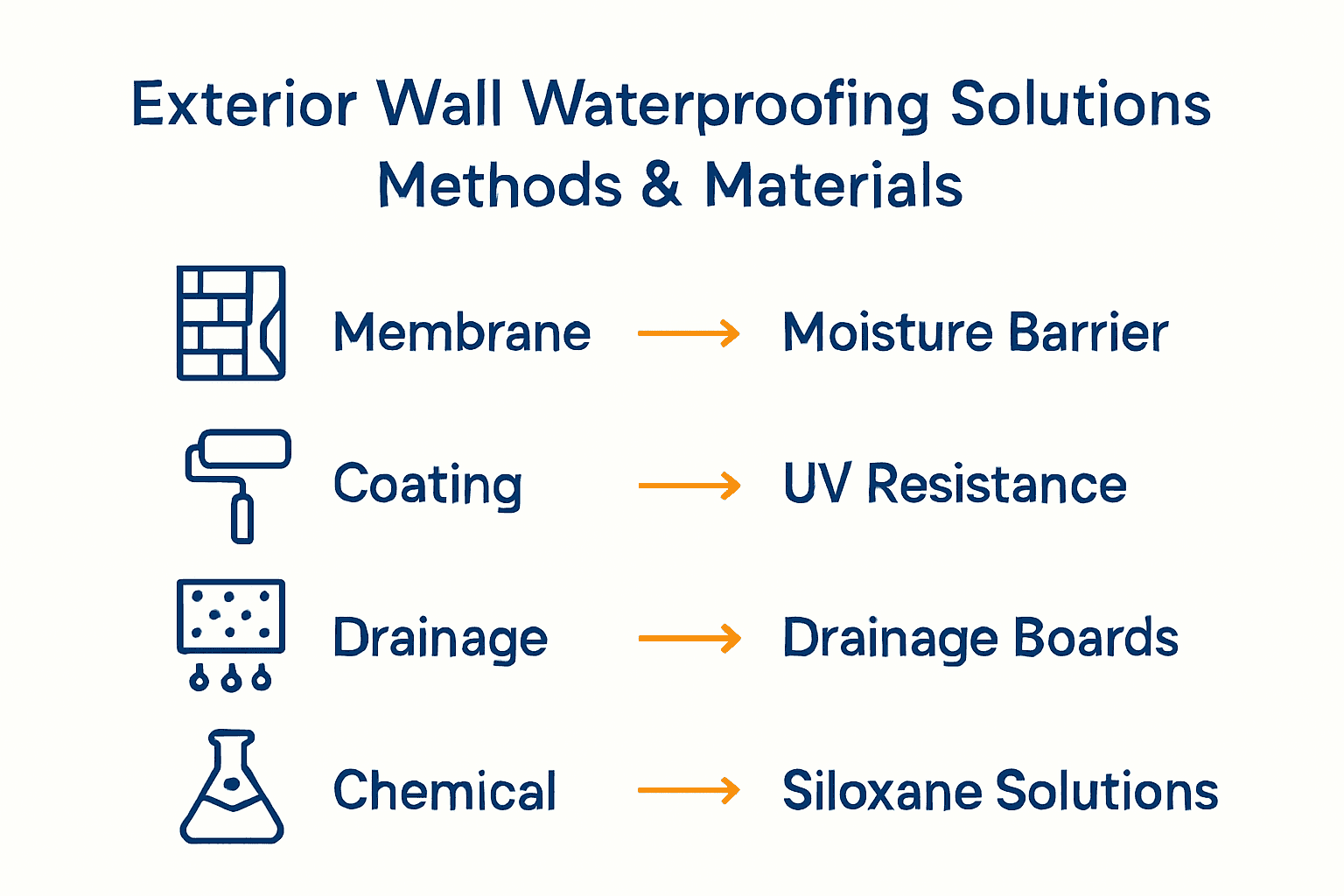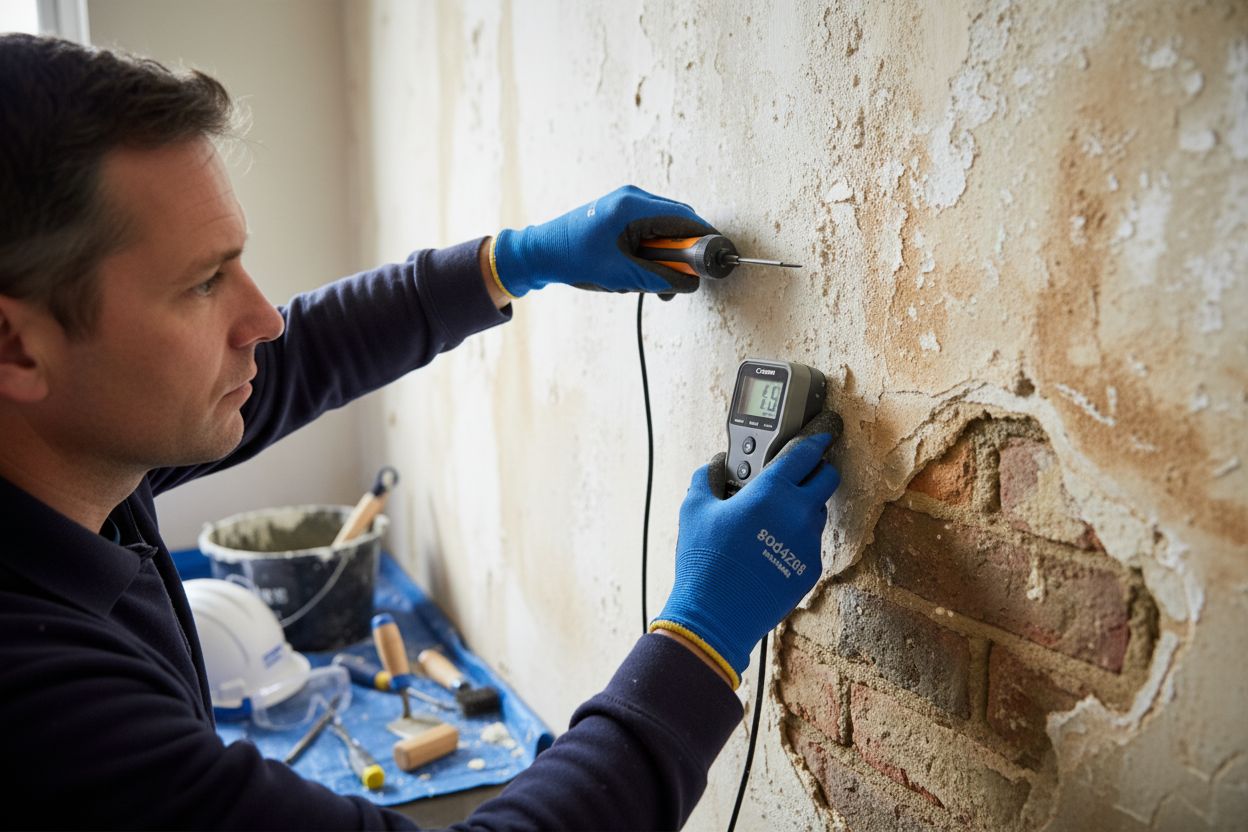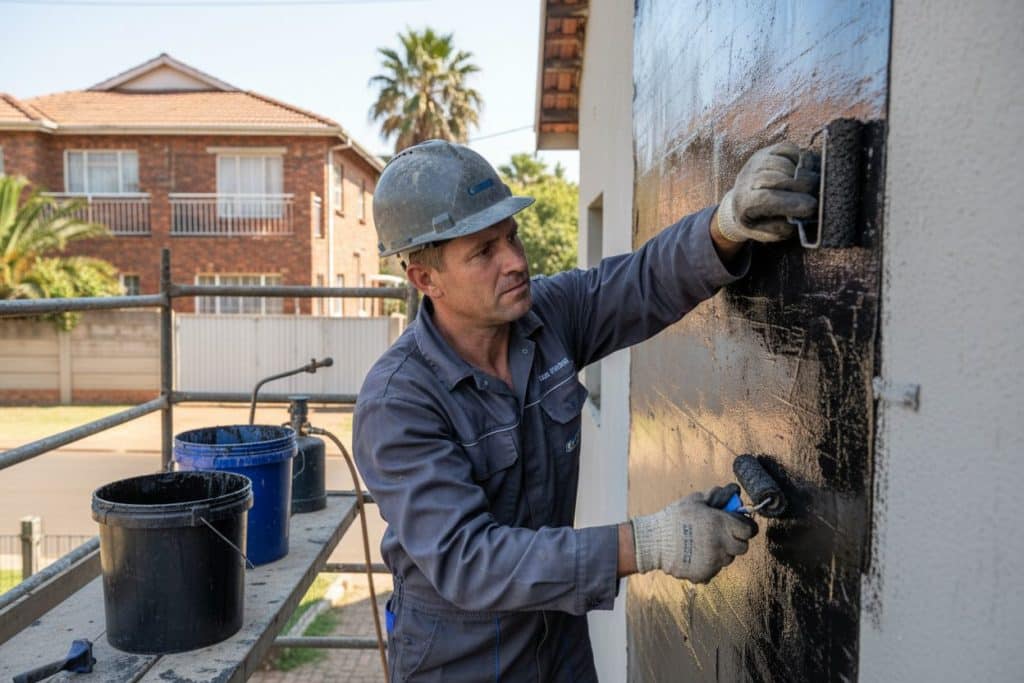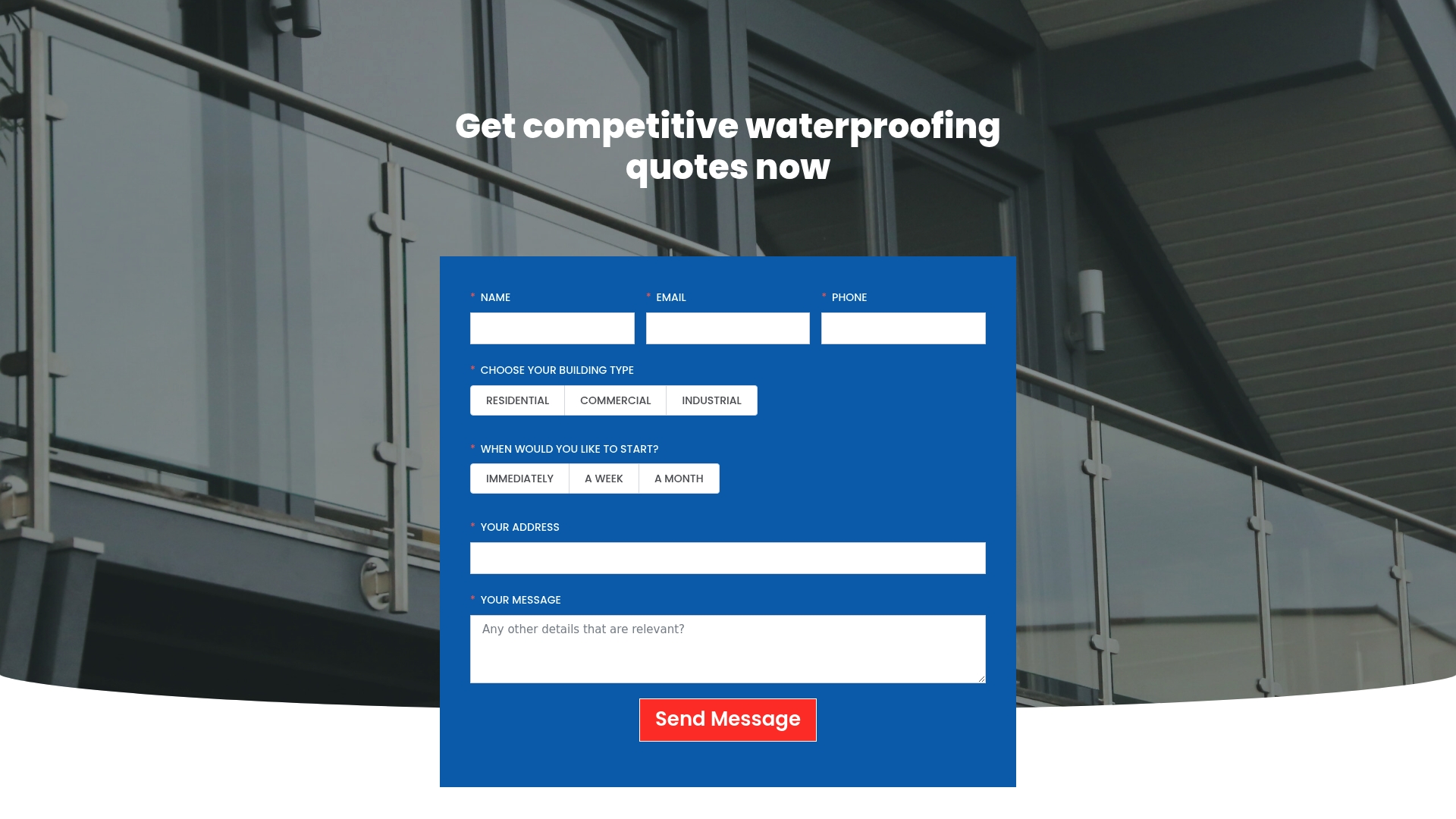Did you know that over 60 percent of building issues are linked to moisture problems? Water can slip through the smallest cracks in exterior walls, quietly causing lasting damage and expensive repairs. Understanding the right waterproofing methods is the first step to protecting your home or building. This overview unpacks practical strategies and proven techniques for keeping your property dry, secure, and resilient against South Africa’s climate challenges.
Key Takeaways
| Point | Details |
|---|---|
| Effective Waterproofing Methods | Utilize membrane systems, coatings, drainage solutions, and chemical treatments to create robust barriers against moisture. |
| Surface Preparation is Key | Thoroughly clean, inspect, and repair walls before applying waterproofing solutions to ensure maximum effectiveness. |
| Recognize Signs of Damp | Look for visual indicators like paint blistering, tide marks, or mould to address moisture issues before they escalate. |
| Invest in Professional Services | Engage qualified contractors to ensure proper installation and long-lasting protection against moisture-related damage. |
Table of Contents
- Defining Exterior Wall Waterproofing Methods
- Types of Waterproofing Solutions Available
- Step-By-Step Process for Installation
- Common Causes and Signs of Wall Damp
- Risks, Costs, and Contractor Selection Tips
Defining Exterior Wall Waterproofing Methods
Exterior wall waterproofing represents a critical protective strategy designed to prevent moisture penetration and structural damage to buildings. At its core, this process involves creating a robust barrier that blocks water from entering exterior walls through various sophisticated techniques and materials.
According to research from external wall insulation sources, exterior waterproofing encompasses multiple strategic approaches:
Here’s a comparison of key exterior wall waterproofing methods:
| Method | Application Surface | Primary Benefit | Typical Materials |
|---|---|---|---|
| Membrane Systems | Directly on wall surface | Strong moisture barrier | Bitumen sheets Liquid membranes |
| Coating Technologies | External masonry/render | Water repellence UV resistance |
Acrylic coatings Masonry creams |
| Drainage Solutions | Around base of wall | Redirects water away Reduces ground moisture |
Drainage boards French drains |
| Chemical Treatments | Penetrates wall substrate | Alters properties Breathable barrier |
Silane-siloxane Hydrophobic solutions |
- Membrane Systems: Application of waterproof membranes directly onto exterior wall surfaces
- Coating Technologies: Specialized sealants and protective coatings that repel moisture
- Drainage Solutions: Integrated systems that redirect water away from wall structures
Research indicates that rising damp presents a significant challenge in exterior wall protection. As noted by moisture experts, water can travel through masonry via capillary action, potentially causing substantial structural deterioration if left unchecked. Modern waterproofing methods specifically target these moisture transmission mechanisms, employing advanced materials like polystyrene and mineral wool insulation systems that not only block water but also provide thermal regulation.
For a comprehensive understanding of selecting the right waterproofing approach, our guide on exterior versus interior waterproofing solutions offers detailed insights into matching techniques with specific structural requirements.
Types of Waterproofing Solutions Available
Waterproofing solutions encompass a diverse range of techniques and materials designed to protect structures from moisture intrusion, each tailored to address specific environmental challenges and building requirements. Understanding these solutions helps property owners select the most effective approach for their unique situation.
According to local research, key waterproofing solutions include:
- Membrane Systems: Protective layers applied directly to wall surfaces
- Coating Technologies: Specialized sealants that create water-resistant barriers
- Chemical Treatments: Penetrating solutions that modify material properties
Research from South African sources highlights specific local solutions. Understanding the role of membranes in waterproofing reveals advanced protective strategies like water-repellent treatments and breathable masonry creams. These treatments, such as Stormdry Masonry Protection Cream, are particularly effective for addressing penetrating damp by creating a microscopic protective layer that prevents water ingress while maintaining the material’s breathability.
For comprehensive protection, experts recommend a multi-layered approach. This involves not just applying waterproofing treatments but also addressing underlying structural issues like damaged brickwork, faulty guttering, and potential moisture pathways. By combining targeted chemical treatments with structural repairs, property owners can create robust, long-lasting moisture protection strategies that safeguard their investments against water-related damage.

Step-By-Step Process for Installation
Exterior wall waterproofing requires meticulous preparation and precise execution to ensure long-lasting protection against moisture intrusion. The installation process demands careful planning, specialized skills, and systematic implementation to create an effective moisture barrier.
The comprehensive installation process typically involves these key stages:
- Surface Preparation
- Thoroughly clean and inspect exterior wall surfaces
- Remove existing damaged coatings or render
- Repair any structural cracks or imperfections
- Ensure surface is completely dry and stable
- Moisture Assessment
- Conduct detailed moisture mapping
- Identify potential water entry points
- Evaluate underlying structural integrity
- Determine appropriate waterproofing technique
- Product Selection and Application
- Choose compatible waterproofing membrane or coating
- Apply primer to enhance product adhesion
- Use professional-grade application techniques
- Ensure complete and uniform coverage
Choosing waterproofing solutions requires understanding your specific environmental conditions and structural requirements. Professionals typically recommend multiple layers of protection, starting with foundational repairs and ending with specialized waterproofing treatments.
The final stage involves thorough quality checks and ongoing maintenance. This includes monitoring the treated surfaces, ensuring proper drainage, and scheduling periodic inspections to maintain the effectiveness of the waterproofing system.

Common Causes and Signs of Wall Damp
Wall damp represents a critical structural issue that can compromise building integrity and pose significant health risks. Understanding the underlying causes and recognizing early warning signs is essential for proactive property maintenance and preventing extensive damage.
According to local research, wall damp manifests through several distinctive signs:
- Visual Indicators
- Paint blistering or peeling
- Visible tide marks on walls
- Efflorescence (white salt deposits)
- Mould and moss growth
- Rotting wooden structures like skirting boards
Causes of Wall Damp typically fall into two primary categories:
- Rising Damp
- Failed or absent damp-proof course (DPC)
- Ground moisture levels exceeding protective barriers
- Trapped moisture within plaster layers
- Penetrating Damp
- Leaking gutters and drainage systems
- Damaged brickwork or mortar pointing
- Porous masonry materials
- Inadequate external wall protection
Key signs your property needs waterproofing can help homeowners identify potential moisture issues before they escalate. Early detection allows for targeted interventions, preventing structural deterioration and potential health hazards associated with prolonged moisture exposure.
Professional assessment becomes crucial when multiple signs persist, as complex moisture problems often require specialized diagnostic techniques and comprehensive remediation strategies.
Ignoring these warning signals can lead to significant structural damage, decreased property value, and potential health risks from mould and mildew proliferation.
Risks, Costs, and Contractor Selection Tips
Waterproofing projects involve substantial financial investment and potential long-term structural implications that demand careful consideration and strategic planning. Understanding the associated risks and making informed contractor selections can significantly impact the effectiveness and longevity of your moisture protection strategy.
The potential risks of inadequate waterproofing are profound:
- Property Damage Risks
- Structural integrity compromise
- Foundation weakening
- Mould and fungal growth
- Reduced property value
- Compromised indoor air quality
Cost Considerations vary based on several critical factors:
- Extent of Damage
- Minor repairs: R2,000 – R10,000
- Moderate intervention: R10,000 – R30,000
- Comprehensive restoration: R30,000 – R100,000+
- Contractor Selection Criteria
- Verified professional credentials
- Demonstrated local experience
- Comprehensive warranty offerings
- Transparent pricing structures
- Proven track record with similar projects
Preventing and treating damp in internal walls highlights the importance of professional intervention. Research emphasizes that locally manufactured, climate-adapted products installed by accredited applicators provide the most reliable protection against moisture intrusion.
Ultimately, investing in professional waterproofing is not an expense but a critical preventative measure. Engaging experienced contractors who understand local environmental conditions can save substantial long-term costs by preventing extensive structural damage and maintaining your property’s value and integrity.
Protect Your Property with Proven Exterior Wall Waterproofing Experts
Moisture damage and persistent wall damp can quickly undermine your property’s value and comfort. If you have spotted paint blistering, tide marks, or mould, you know how stressful and costly unchecked water ingress can be. The article above explains how rising damp, failed membranes, and ineffective DIY solutions leave your walls vulnerable. You deserve peace of mind backed by true expertise.
View our full range of waterproofing services for homes and businesses in your area.
Take charge of your building’s future. Partner with South Africa’s trusted specialists at Pro Waterproofing and experience the difference that comes with professionally installed exterior wall waterproofing. Our trained contractors deliver local insight, certified materials, and long-term protection tailored to your needs. Do not let damp problems get out of hand. Request a personalised quote today and start safeguarding your walls now.
Frequently Asked Questions
What are the main methods of exterior wall waterproofing?
The primary methods of exterior wall waterproofing include membrane systems, coating technologies, drainage solutions, and chemical treatments. Each method has its own application surface, benefits, and materials used for effective moisture protection.
How does rising damp affect exterior walls, and how can it be prevented?
Rising damp occurs when moisture travels through masonry via capillary action, leading to structural damage over time. It can be prevented by ensuring an effective damp-proof course (DPC) and employing proper waterproofing methods like membrane systems or chemical treatments.
What signs indicate that my property needs waterproofing?
Common signs of wall damp include paint blistering or peeling, visible tide marks, efflorescence (white salt deposits), mould growth, and rotting wooden structures. Early identification of these signs can help prevent serious structural damage.
What factors influence the cost of waterproofing projects?
The cost of waterproofing varies based on the extent of damage, the methods used, and the materials selected. Minor repairs may cost between R2,000 – R10,000, while comprehensive restoration can range from R30,000 – R100,000+. Choosing credible contractors also affects the price.
Recommended
- 5 Common Exterior Basement Waterproofing Techniques
- Understanding Exterior vs Interior Waterproofing Solutions – Pro Waterproofing
- A to Z of Roof Waterproofing – Pro Waterproofing
- The Basics of Interior Waterproofing (Weeping Tile System)
- Impermeabilización De Muros Enterrados: Guía Completa – Solo Humedad
- Mortar Guide for Outdoor Tile Projects | Surfaces Galore


